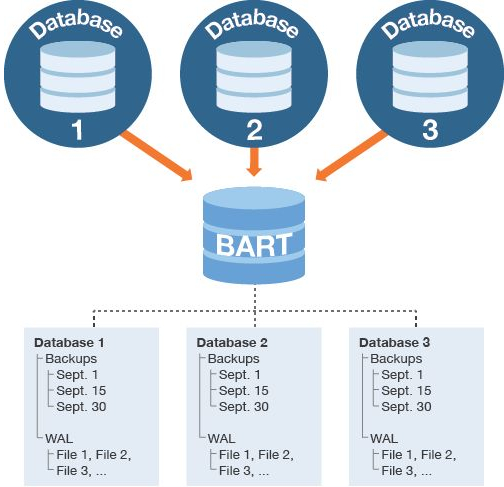Backup and Recovery Tool by EnterpriseDB
For Postgres
This is a Press Release edited by StorageNewsletter.com on October 15, 2014 at 3:03 pmEnterpriseDB Corp. (EDB), provider of enterprise Postgres products and database compatibility solutions, announced EDB Backup and Recovery Tool (BART).
EDB BART gives Postgres users a single tool to set up, manage and automate processes for backup and recovery in the event of an operator error, database corruption or other massive system failure. It replaces a series of complex steps and coding requirements that Postgres users have had to master to ensure databases backup on schedule, and can be rebuilt.
The new tool is a component to EDB’s suite of integrated enterprise-grade Postgres tools that enable global enterprises deploying Postgres to support a range of non-mission and mission-critical workloads. In addition to BART, EDB has developed and rolled out tools for monitoring and alert management, single- and multi-master replication, automated failover, protection against SQL injection attacks, database migrations and automated updates.
“Our tools represent the most comprehensive and advanced set of solutions for today’s enterprise Postgres user,” said Marc Linster, SVP, products and services, EnterpriseDB. “As Postgres deployments expand in size and across more end users, demand rises for easy-to-use tools that address a range of complex management and security requirements. Working closely with end users, we have introduced tools to address these needs, and we continue to enhance our solutions as other needs evolve.”
Features Target User Needs
BART supports both open source PostgreSQL and EDB’s Postgres Plus Advanced Server, and integrates with existing backup and recovery processes enterprises typically have in place.
Among the key features are:
- Backup and Recovery Manager Catalog enables users to manage a catalog of the local and remote Postgres servers involved in backup and recovery.
- Command Line Interface gives users powerful options to execute backup, restore and management operations, and it can be integrated into existing scheduled backups (e.g. cron jobs).
- Hot Physical Backups allows continued user access without interruption by enabling the database to backup without having to shut down.
- Point-in-Time-Recovery gives users the ability to roll forward from a point of last database backup.
- Auto-Compression and MD5 Checksum Verification provides for reduced backup file storage and recording of MD5 checksums to validate backup files.
- Support for Multiple Tablespaces on Different Paths ensures that backup and recovery adheres to file management policies, and is compatible with existing policies.













 Subscribe to our free daily newsletter
Subscribe to our free daily newsletter
